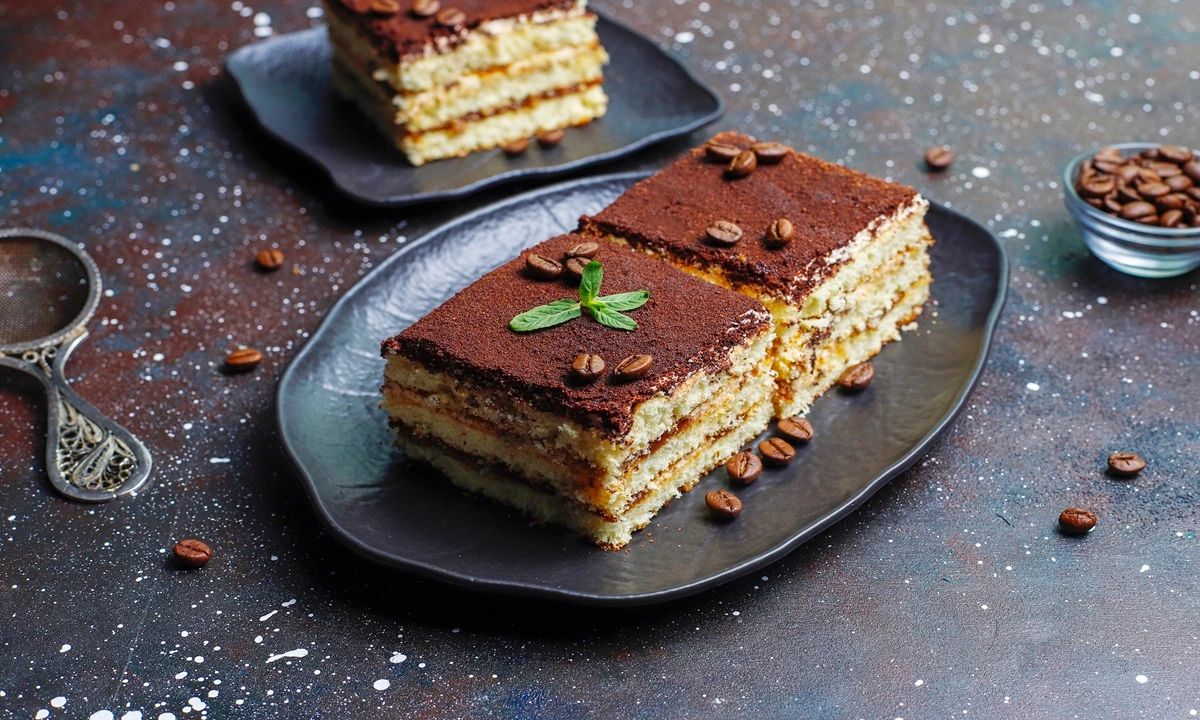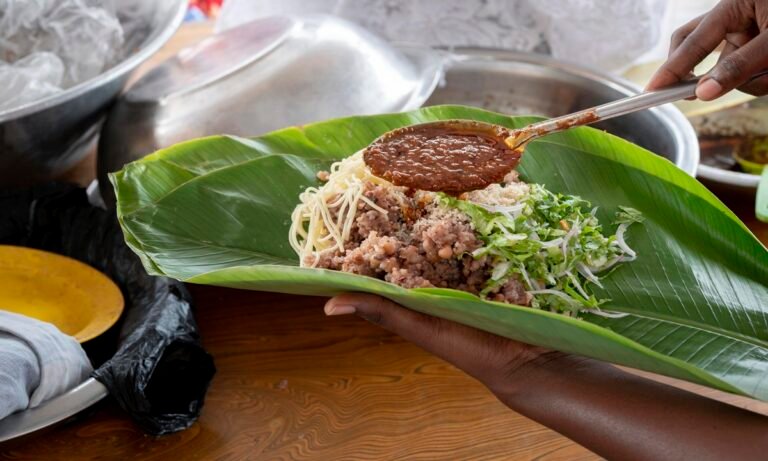Desserts are more than just sweet treats; they are a reflection of culture, history, and tradition. Exploring traditional desserts from around the world offers a delightful journey through diverse flavors and culinary practices. In this guide, we’re taking you on a flavorful trip through the top 10 traditional desserts that have captured hearts globally.
Table of Contents
Toggle1. Tiramisu – Italy (The Story Behind the Layers)
One of the most beloved traditional desserts from around the world, Tiramisu hails from Northern Italy. The name means “pick me up” in Italian, and this dessert certainly lives up to its name. Born in the Veneto region, Tiramisu combines strong espresso, creamy mascarpone, and delicate ladyfingers into a luscious, layered treat.
What Makes It Special
Tiramisu stands out because of its contrasting flavors: the bitterness of coffee, the sweetness of cream, and a dusting of cocoa. It’s often served chilled, making it the perfect summer dessert.
Where to Try It
The most authentic tiramisu can be found in Treviso, Italy. However, it’s a global favorite and widely available at Italian restaurants worldwide.
2. Gulab Jamun – India (India’s Favorite Festive Sweet)
Gulab Jamun is one of the richest and most iconic traditional desserts from around the world, especially in South Asia. Made from khoya (dried milk solids), these golden-brown balls are deep-fried and soaked in sugar syrup flavored with rose water and cardamom.
Cultural Importance
This dessert is a staple during Indian festivals like Diwali and Holi, and it’s also a must-have at weddings and religious events. The syrupy texture and floral scent make it unforgettable.
Pro Tip
Serve Gulab Jamun warm with a scoop of vanilla ice cream to modernize this classic without losing its traditional essence.
3. Mochi – Japan (A Chewy Symbol of Celebration)
Mochi is a soft, stretchy rice cake that’s a staple in Japanese cuisine and culture. Made by pounding glutinous rice into a sticky dough, it’s shaped into small rounds and often filled with sweet red bean paste.
When and Why It’s Enjoyed
Mochi is deeply rooted in Japanese tradition. It’s a New Year favorite and appears in ceremonies and seasonal festivals. Variants include mochi ice cream, sakura mochi, and daifuku.
Where to Experience It
Visit Japan during the cherry blossom season for sakura-flavored mochi, or find it year-round in Kyoto’s traditional sweet shops.
4. Baklava – Turkey (A Pastry Fit for Royalty)
Baklava is a rich, flaky pastry made from layers of filo dough, crushed nuts (usually pistachios or walnuts), and sweet syrup or honey. It’s one of the most decadent traditional desserts from around the world.
Origins and Influence
Originating in the Ottoman Empire, Baklava is enjoyed across the Middle East, Greece, and the Balkans. It’s a symbol of hospitality and is often gifted during Ramadan and other religious holidays.
Expert Tip
To get the best Baklava, head to Gaziantep in Turkey, known for its world-class pistachios and UNESCO-recognized culinary heritage.
5. Brigadeiro – Brazil (Brazil’s Chocolate Delight)
Brigadeiro is a Brazilian party essential. These chocolate fudge balls are made from condensed milk, cocoa powder, butter, and coated in chocolate sprinkles.
Why It’s Beloved
Quick to make and incredibly tasty, Brigadeiros are a nostalgic treat for most Brazilians. They are usually homemade for birthdays and celebrations.
Fun Fact
The dessert was named after Brigadier Eduardo Gomes, a presidential candidate in the 1940s.
6. Mango Sticky Rice – Thailand (A Tropical Thai Treat)
Mango Sticky Rice is a warm-weather dessert that combines glutinous rice with coconut milk and fresh mango slices. It’s the essence of Thai summers.
The Cultural Context
Traditionally eaten during the Thai New Year (Songkran), it’s a balance of sweet, salty, and fruity flavors that feels refreshing yet indulgent.
Best Time to Try
Visit Thailand between March and May to enjoy the juiciest mangoes during their peak season.
7. Crème Brûlée – France (Elegance in Every Spoonful)
Crème Brûlée is a custard-based dessert topped with a brittle layer of caramelized sugar. It’s a staple of French fine dining.
A Touch of History
With roots in 17th-century France, this dessert is often flavored with vanilla and served in individual ramekins.
How to Enjoy It
Use a spoon to gently crack the caramel top and scoop up the smooth custard underneath for a perfect textural contrast.
8. Malva Pudding – South Africa (Warm, Gooey, and Irresistible)
Malva Pudding is a sponge-like cake made with apricot jam and soaked in a buttery cream sauce. It’s served warm and often with custard or ice cream.
Cultural Connection
A comforting dessert with Cape Dutch roots, it’s commonly served after Sunday roasts or festive family meals.
Best Enjoyed
In winter or cooler months, when its warm, gooey texture feels like a hug in dessert form.
9. Pavlova – New Zealand (A Light Meringue Delight)
Pavlova is a crisp-on-the-outside, marshmallowy-on-the-inside meringue topped with whipped cream and fresh fruit.
Origin Controversy
Both Australia and New Zealand claim to have invented it, naming it after the Russian ballerina Anna Pavlova.
Best Fruit Toppings
Berries, kiwi, passionfruit, or mango give the perfect contrast to the light sweetness of the meringue base.
10. Tres Leches Cake – Mexico (Milk-Soaked Perfection)
Tres Leches Cake is a sponge cake soaked in three types of milk: evaporated, condensed, and heavy cream.
Why It Stands Out
Despite being rich, it feels light and airy. It’s perfect for warm climates and is a staple in many Latin American countries.
Serving Suggestion
Top it with whipped cream and a sprinkle of cinnamon or sliced strawberries for added flavor and visual appeal.
Why Try Traditional Desserts from Around the World?
Trying desserts from different cultures is like traveling without leaving your kitchen. You learn about traditions, ingredients, and what people cherish most. Each dessert has a story, whether it’s tied to religious events, national pride, or simple family comfort.
From the rich coffee notes of tiramisu to the tropical sweetness of mango sticky rice, these traditional desserts from around the world reflect cultural identity and creativity
Final Thoughts
These traditional desserts from around the world show us how diverse and delicious global cultures can be. Whether it’s a syrupy Gulab Jamun or a crisp Pavlova, each dessert tells a unique story that goes beyond taste. So next time you crave something sweet, think globally—and try a little slice of culture.
FAQs
What are traditional desserts?
Traditional desserts are culturally significant sweet dishes often passed down through generations. They are usually tied to festivals or regional customs.
Which country has the best traditional dessert?
It depends on your taste! Italy, India, and France are often praised for their rich and diverse dessert traditions.
Can I make these desserts at home?
Yes! Many traditional desserts from around the world are surprisingly easy to make with the right ingredients and a good recipe.
Where can I try international desserts?
Ethnic restaurants, cultural festivals, and even some food trucks serve global desserts. Local bakeries in diverse neighborhoods are also great options.
Are traditional desserts healthier than modern sweets?
Not always, but they often use fewer artificial ingredients and more natural flavors, making them a more wholesome treat.






